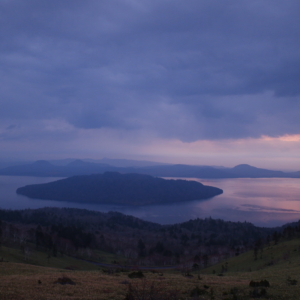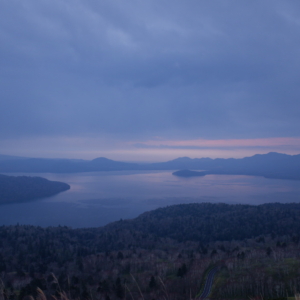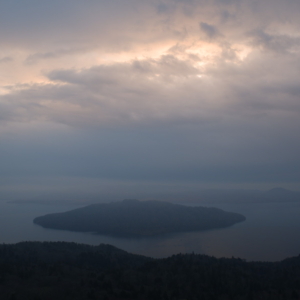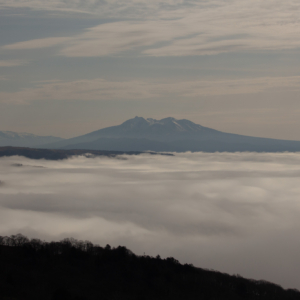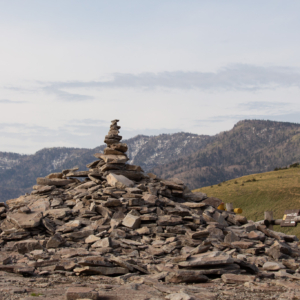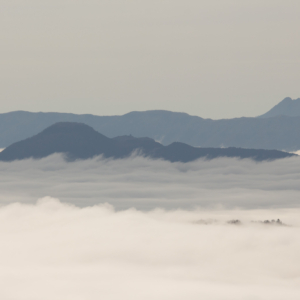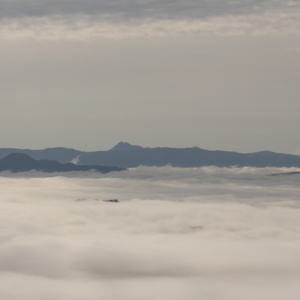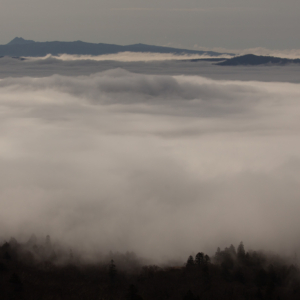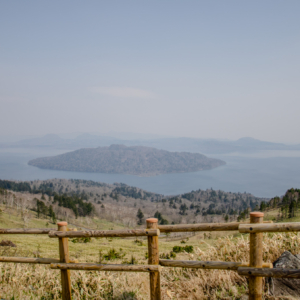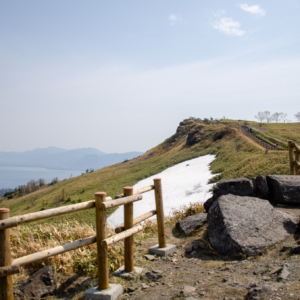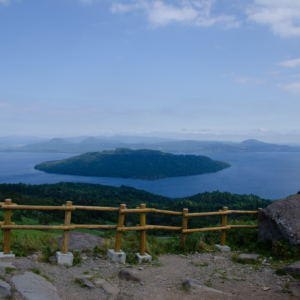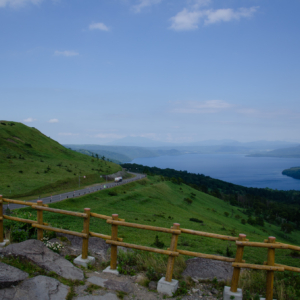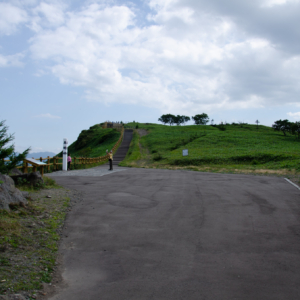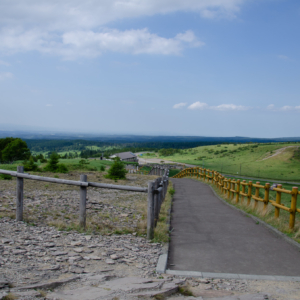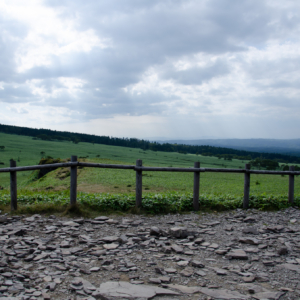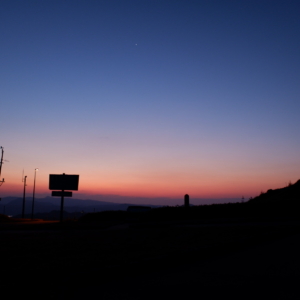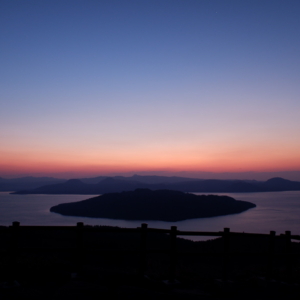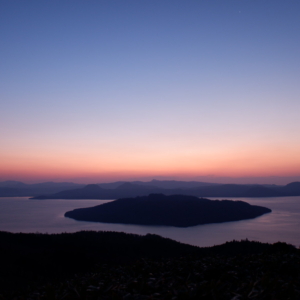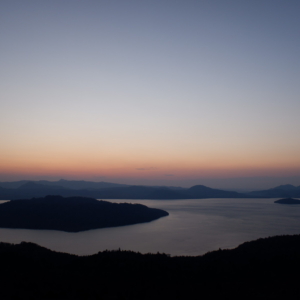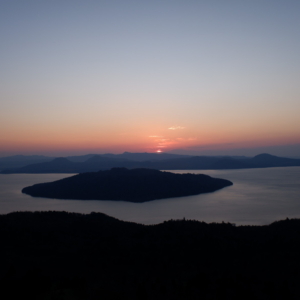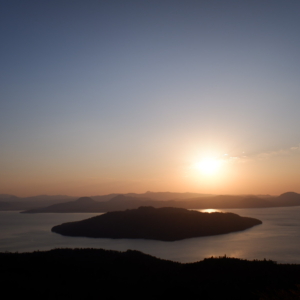When traveling to Lake Kussharo in Eastern Hokkaido or heading from Lake Kussharo to Kitami, you’ll inevitably pass through Bihoro Pass.
This pass features a large parking area at the roadside station “Gurutto Panorama Bihoro Pass,” making it an ideal rest stop. In summer, it’s not just cars but also many motorcyclists who line up their bikes to enjoy the view.
Why do so many people gather here? Because the scenery is spectacular.
Bihoro Pass, at an elevation of 525 meters, offers an observation deck at the summit with breathtaking views of Lake Kussharo, Japan’s largest caldera lake. Beyond the lake, you can see Mount Io, which still emits volcanic smoke, and further to the left, the Shiretoko mountain range. Turning around, the distant peaks of the Daisetsuzan mountain range come into view. This observation deck provides a 360-degree panoramic view of awe-inspiring scenery. Due to its stunning vistas, Bihoro Pass is often referred to as “a scenic wonder.”
After hearing this, you can’t help but want to stop by, right? Absolutely!
Sea of Clouds from Bihoro Pass
Lake Kussharo is renowned for its stunning sea of clouds, especially from spring to autumn when high humidity, low temperatures, and calm winds create the perfect conditions. The best time to witness this natural phenomenon is from just before dawn until around 9 AM.
Experiencing the sea of clouds is a must-see spectacle, a once-in-a-lifetime event.
At dawn, the sun rises from the direction of the Shiretoko mountain range, casting a beautiful light over the lake. On days when the sea of clouds is expected, photographers and cloud enthusiasts gather at the observation deck, cameras ready. The clouds spread over Lake Kussharo like a fluffy blanket, with Nakajima Island appearing to float in the middle, resembling a piece of cotton candy. It feels like you could almost reach out and scoop up the clouds.
As the sky turns a warm orange and the sun begins to rise, the real show starts. Sunlight slowly penetrates the cloud layer, unveiling an awe-inspiring view. Each formation of the sea of clouds is unique, making each visit a new experience. The morning light gently envelops the clouds, creating a serene and majestic scene. The subtle movement of the clouds gives them a lifelike quality, adding to the mesmerizing spectacle.
The occurrence rate of the sea of clouds over Lake Kussharo varies by year, typically ranging from 40% to just under 50%, with most sightings occurring between June and July.
On some occasions, the sea of clouds can be so expansive that Bihoro Pass itself is enveloped. Since Bihoro Pass is only about 500 meters above sea level, this happens quite often.
If you find Bihoro Pass covered, head to Tsubetsu Pass for a clearer view. For more information, refer to the following page.
Wake Up Early for the Best Experience
The optimal time to arrive at Bihoro Pass is just before dawn. Check the weather forecast the day before to see if there’s a chance of witnessing the sea of clouds. Here are the approximate sunrise times:
- Mid-June: around 3:40 AM
- Mid-July: just before 4:00 AM
- Mid-August: around 4:30 AM
- Mid-September: around 5:10 AM
- Mid-October: around 5:40 AM
You can also check the live camera feed of Bihoro Pass here: Bihoro Pass Live Camera.
What to Wear
The observation deck at Bihoro Pass is often windy, as there is nothing to block the wind in all directions. Even on warm summer days, be sure to bring a jacket. The strong winds can quickly lower your body temperature, making it difficult to enjoy the scenery.
Stargazing is Also Fantastic
Bihoro Pass is also an excellent place for stargazing at night. You don’t even need to go all the way to the observation deck; the area is so dark that you can park your car and simply look up at the sky from the parking lot.
On clear nights, you’ll often find people with large telescopes conducting astronomical observations. Be mindful of your car lights when you park.
How Was It?
You can see why Bihoro Pass is considered one of the best spots for breathtaking views. Throughout all seasons, including winter, and from dawn to late at night, Bihoro Pass offers numerous opportunities to witness stunning scenery. If you ever get the chance to pass by, make sure to capture your own beautiful view. It doesn’t cost a thing to take as many photos as you want.

